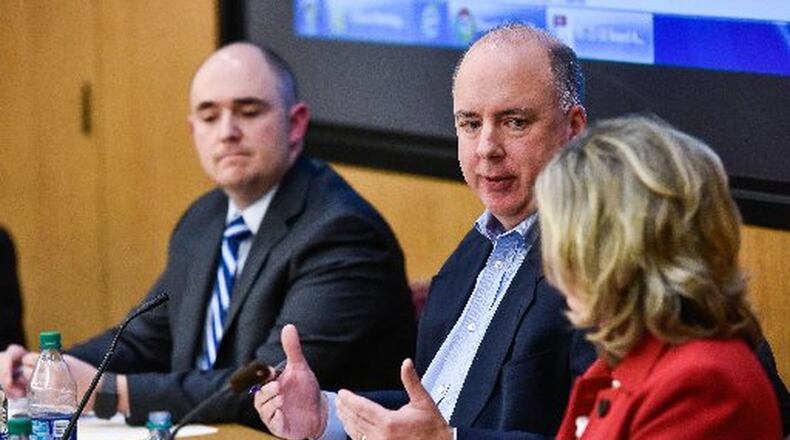School officials said while finances are stable for the 11,000-student district, the projection shows the need for local tax revenue at a later time.
“There will not be an operating levy on the ballot for Mason Schools in 2019,” district officials announced in a statement.
“The district is currently on stable financial ground and is maintaining a healthy cash reserve balance at the beginning of (fiscal year 2019),” said officials. “Mason has cash balance available due to cost reductions that have been made since 2010. However, those cash reserves will be depleted within the next five years and the district will need additional local revenue and/or additional expenditure reductions.”
Mason last passed a new operating levy in 2005.
Ohio school law requires school districts to release 5-year financial projections in October and May of each year.
LAKOTA
Butler County’s Lakota Schools, which is the largest suburban district in Southwest Ohio, also released its financial forecast last week, showing the district will not begin to see a budget shortfall until 2023.
Lakota officials also touted their district’s financial status as stable.
MIDDLETOWN
Middletown Schools also cited their stable financial situation in their forecast, which showed the beginning of budget deficit in 2021.
HAMILTON
Robert Hancock, treasurer of Hamilton Schools, said his district’s forecast “indicates a trend of growing spending deficits ranging from $2.9 million in fiscal year 2020 to $6.7 million in fiscal year 2023. This follows five consecutive years of spending less than we received in (state funding).”
“There have been no discussions about a future levy and we do not anticipate having such a discussion,” said Hancock.
FAIRFIELD
Fairfield Schools Treasurer Nancy Lane said “our cash balance is strong through the end of fiscal year 2022-2023, but much can change between now and then. The uncertainty of school funding is one of the biggest variables in the forecast.”
THE FUTURE OF SCHOOL FUNDING
All five districts — and others in the area — cited similar reasons for the uncertainty of any five-year forecast because the period will include two Ohio’s next biennium budget, the first of which will be done in June, and another two-year budget to be done in 2021, a new governor who will replace John Kasich who is term-limited out of office and possible changes in the state’s school funding formula.
Moreover, the forecasts have to also consider overall local and national economic variables, which can fluctuate widely.
“The largest variable into the future is the amount of state funding the district will receive,” said Mason Treasurer Shaun Bevan.
MORE: New Mason Schools leader is a familiar face
“Careful and continued monitoring and planning will be necessary to determine the steps to sustain future success and financial health,” said Bevan. “Due to the fact that school districts are a service industry, personnel expenses are the largest portion of the budget. As such, wages, health insurance renewals, and staffing levels are significant variables for the future.”
Mason school board member Kevin Wise said “Ohio’s elimination of the Tangible Personal Property tax reimbursement has significantly reduced the district’s funding — dollars or the equivalent of about 8 mills.”
“A portion of our state funding has basically been reduced to zero. I like the way (Bevan) calculated that — about 8 mils. This is essentially a levy that was reduced.This dynamic where they take one chunk of our taxes away and force us to replace with local taxes is really a tax increase,” said Wise.
About the Author
